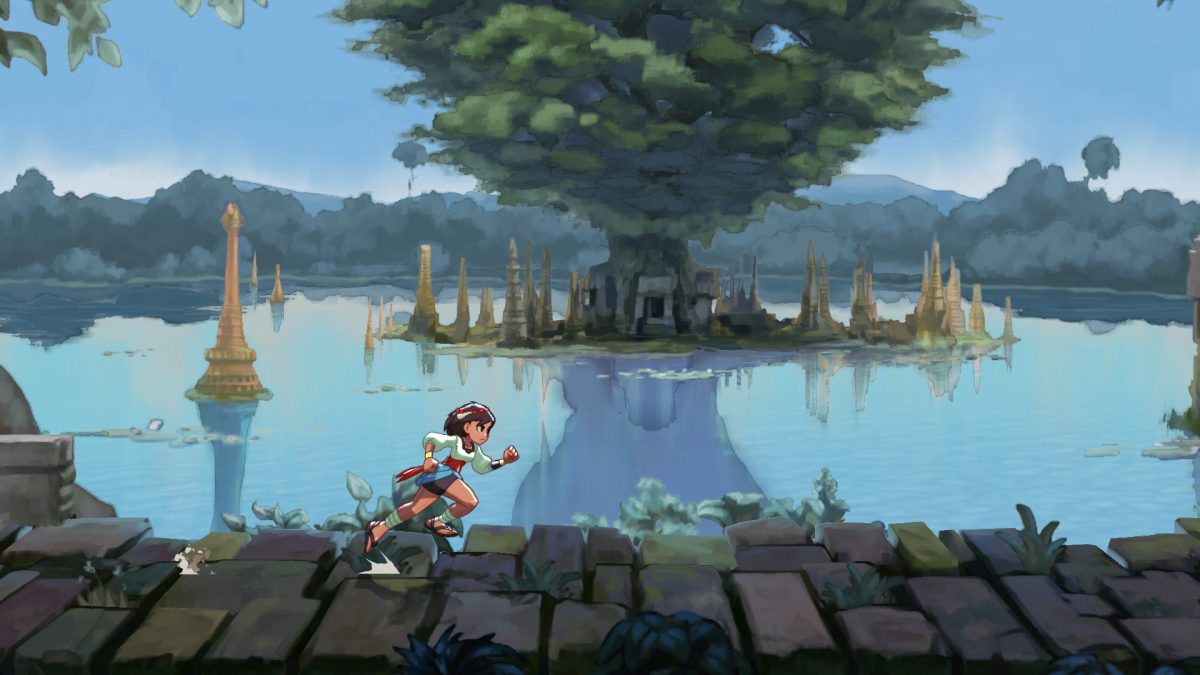One of the surprises of E3 this year was Lab Zero Games’ Indivisible in the 505 Games conference room. Having played the developer’s Skullgirls on a few platforms over the last couple of years, I was intrigued with their followup. An RPG? With a similar style and action to its brawler predecessor? My interest was piqued, and my motivation to check out the game was growing.
I’m glad I did. Indivisible is a blast, both in concept and execution.
Yes, this is an RPG. It features multiple party members, character progression, and a fun plot. It has magic, healing and attacking, monsters and villains, towns and caves. All the prerequisite boxes are checked. However, much like Skullgirls before it, Lab Zero has infused a undeniably interesting battle mechanic into the experience. Throughout the game, we add a variety of members to our questing squad. These teammates are mapped to specific face buttons, so that once the combat begins we select them to attack (or heal, or some other action) based on their charge time.

It’s essentially an active time battle system, but much speedier. It relies on knowing which teammate has what abilities and where they’re mapped. During my play session, which consisted of running through a forest, cave and temple, I gathered a full squad of teammates and organized the ones I use most. As the battles became more intense and enemies attacked earlier and earlier, I needed to not only know who was mapped to what button, but to know how far along in their recharge meter they were. The longer my party members charge, the more intense their actions become. A one star attack may just be a punch, whereas two stars might be a fire punch and three stars a nuclear punch, for example.
It keeps battles moving at a consistent clip, never breaking from the flow of the rest of the game like old school RPGs that pause world traversal to throw us into combat.
As teammates die or we get bored of them, they can be replaced by us in between battles. So, if our party is too brute heavy we may want to yank out one of our dudes and drop in someone with ranged attacks or healing magic.

Couple the zippy, enjoyable battles with a stunning hand-drawn art aesthetic — something Lab Zero is becoming known for — and the game looks to be a worthwhile venture. As protagonist Ajna explores her world, she jumps, double jumps and even uses an axe to climb to to higher areas, all with striking animation. The sometimes quirky characters she comes across for her team essentially become versions of her personality, so that she’s flipping between people in her head manifested in battle rather than actual different characters.
Ajna’s split personality provides some interesting paths for innovation in the game, and certainly brings in design and narrative elements that feel fresh. We’ll know just how split her world is when the game arrives in 2018 for Nintendo Switch, PC, PS4 and Xbox One.


No Comments